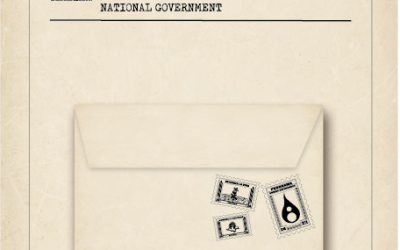
A new presidential period of eight years was closed, and with it, the most awaited chapter in recent history: the pact to overcome the armed conflict with the FARC, now transformed into a political party. The negotiation table with the ELN and its expectation of continuance also remained on top. Perhaps like no other, the Government of Juan Manuel Santos has the stamp of the search for peace, with great contradictions such as bearing the loss of a plebiscite to endorse peace agreements, but at the same time with a Nobel Peace Prize.
However, in terms of guarantees for the exercise of the defense of human rights and social leadership, the balance in red is large and it is not comprehensible how, in a period marked by a context of peace, its greatest promoters and defenders, especially from the territories, have paid the highest cost. More than 600 people defending human rights, lost their lives, while the government negotiated with the insurgencies, the confrontation was deescalated and the violence figures decreased.
But the phenomenon goes beyond the figures, which became the “problem itself”, given the multiplication of sources of information, studies on the phenomenon, and the discrepancies between them and those assumed by the Colombian State. Therefore, with this report we want to analyze a little more the issue of the figures; to see, if wanted, where the differences, methods and consequent results lie; but without forgetting, of course, that the centrality lies in a fundamental problem, structural and structuring a very serious pathology, which grows with no measure and is configured as humanitarian and obstacle to continue the search for peace, as it is the criminalization of Colombian social leadership.
We have entitled this report Beyond the Figures, part two, reediting the title of the report from eight years ago, where we focused our attention on the same event. Today, we also try a brief balance of these two periods of government of Juan Manuel Santos in relation to the policy of protection and guarantees for social leaderships and the exercise of the defense of human rights; the reiterated role of the Attorney General’s Office, and of course, we risk some considerations and uncertainties still marked in the matter, with the new government of Iván Duque, especially for his proposals during the campaign, the bad exit of some of his Ministers barely taking possession of their positions, but above all, the political party that he owes to, the Democratic Center and its difficult positions on matters of peace and human rights.
In this brief balance, Beyond the Figures part two, the progress in regulations is recognized, as well as the willingness to dialogue and agreement between the Government and society, in addition to the negotiation table with the guerrillas; but also, how many traced routes and good intentions were reflected in two institutional roles and narratives, but without developments in practice, problematic ambivalence in the territories, especially where there was much expectation in the arrival of peace, but where, on the contrary, the violence strengthened as hope escaped like water between the fingers.
The Report also highlights the important role of the international community and its efforts in different areas of peace translated into human rights, guarantees, protection, human rights defenders, among others.
And as always, a recognition and an in memoriam to all the women and men who have left their lives in the corner of their homes, on their work space, on the roadside, in the hall of the union headquarters, in the arms of his partner or daughter who wanted to protect him with his body, in the communal house, in the fray of social mobilization… In short, in the daily struggle for the rights of their communities and peoples. But also, to defenders who despite the extremely high risks, continue stoically in their territories with intact hope and the strong conviction that Colombia will continue the transition to build a balanced, fair and equitable society, where working for rights will not cost their life.
But as never before, there was a highly positive sensibility awakening in Colombian and foreign society, including media, about the seriousness and indignation before the increase of murders against social leaders, expressed in the “Velatón” for the life of July 6, 2018 (Velatón: figure used to describe a night spent in vigil, in which each attendant lights a candle by midnight, in honor of those who dies fulfilling their work).
And last but not least, the analysis of the figures released by the SIADDHH, which account for the increase in aggression, the most affected social sectors, the most distressed regions, the presumed responsible and the long and sad list of defenders of murdered rights.
We thank the technical support provided to SIADDHH by CINEP; as well as the support of human rights and peace and development platforms such as the CCEEU and other national, regional and local human rights organizations and networks with information that nourish our report. Special thanks to the Office of the United Nations High Commissioner for Human Rights in Colombia – OACNUDH. We also appreciate the financial support of the Royal Norwegian Embassy in Colombia and the international cooperation agencies DIAKONIA, MISEREOR, Terre des Hommes – Schweiz, as their support was essential for the completion of this Report.




